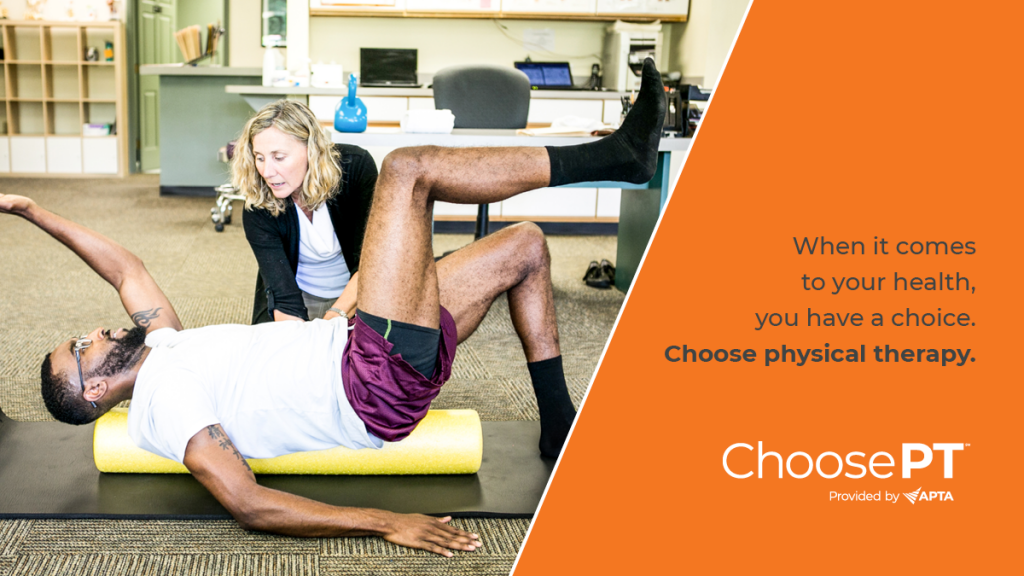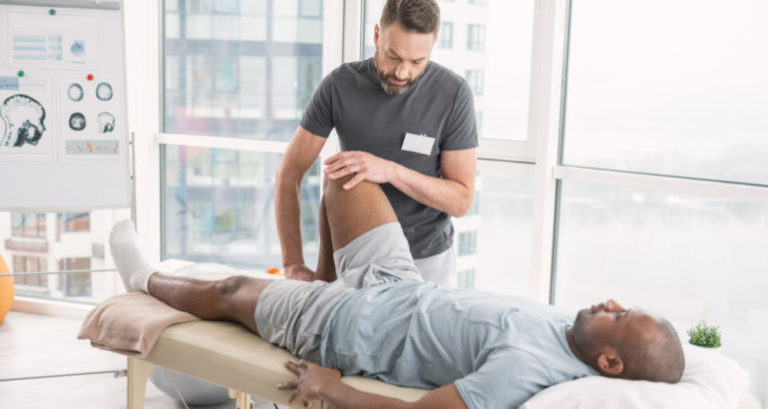Many people are still not aware of this, but you can come to physical therapy FIRST!! No, you don’t need to see your doctor first. No, you don’t need to go to the orthopedist first. No, you don’t need to wait to have your pain treated. Use Physical Therapy as primary care for orthopedic injuries. Since 2006, the state of Connecticut has allowed for Direct Access to Physical Therapy. This is your ability to seek evaluation and treatment with your trusted Physical Therapist without need to see your Doctor or gain a referral first.
 Research has shown us that if you address acute injuries within the first 24-72 hours, the amount of time to fully recover is cut to a fraction of if you wait on treatment. My time as a civilian intern at the United States Air Force Academy (USAFA) taught me a lot about this methodology. How, you ask? Because this is the exact system they implement in the treatment of our injured soldiers.
Research has shown us that if you address acute injuries within the first 24-72 hours, the amount of time to fully recover is cut to a fraction of if you wait on treatment. My time as a civilian intern at the United States Air Force Academy (USAFA) taught me a lot about this methodology. How, you ask? Because this is the exact system they implement in the treatment of our injured soldiers.
The reason is simple: If you address injuries quickly, efficiently, and effectively, you will cut healthcare costs tremendously and get people back to their activities ASAP. At USAFA, we had 1 main orthopedist on staff and a team of PT’s. Not every cadet treated needed to see the ortho. Less than 10% required a consultation during my time there. Not every patient needed imaging (which in their system could be ordered by PT’s) nor required medications (which could also be ordered by PT’s in their system) to begin feeling better. By using physical therapy as primary orthopedic care we are better able to treat injuries quickly and effectively. Looking at movement allows a group of highly skilled practitioners the ability to evaluate a patient first and determine if they need a battery of imaging, medications, and/or additional consultation.

We as PT’s are uniquely qualified to assess movement. A diagnostic image such as a X-Ray or MRI is a snap shot in time but doesn’t tell you how your body is moving. People have arthritis, spinal disc degeneration, and mild fraying of tendons and ligaments. These problems are part of normal wear and tear and also a typical part of the aging process. So, is it really necessary to take an image of every painful, stiff, or dysfunctional part of our body? Not unless specific limitations of your movement, strength, or symptomatic behavior point us directly to that.
 So why do we run right to an X-ray before looking at ANYTHING else? Before assessing movement or strength. Before putting a finger on the dysfunctional area to determine if that could even be where the pain is coming from in the first place. Using physical therapy as primary orthopedic care can dramatically reduce the cost of your healthcare.
So why do we run right to an X-ray before looking at ANYTHING else? Before assessing movement or strength. Before putting a finger on the dysfunctional area to determine if that could even be where the pain is coming from in the first place. Using physical therapy as primary orthopedic care can dramatically reduce the cost of your healthcare.
I pride myself in being the first stop for patients in our community for their orthopedic and neurological based pain. The ability to assess movement and effect change on day one is imperative. To immobilize and do nothing with a simple sprain or strain is to risk increasing your functional limitations and impairments and often times put you behind the 8-ball in your rehab process
The top 2 examples I constantly give are following a jammed finger and after an ankle sprain. When you jam your finger it swells, becomes painful to move, and is limited with grip strength. That is normal. It is our body’s way of saying “I’m hurt….take it easy”. What your body isn’t telling you is to stop moving all together! Rather, as we move the jammed and swollen finger within a reasonable range of motion and pain level, the more your motion improves and the less swollen and painful it is.
When your child comes home from practice with an acute ankle sprain and it is swollen up like a basketball, what is the best solution? Should you go to the time tested R.I.C.E. (Rest, Ice, Compression, and Elevation)? Of course, that’s a good place to start. But you had better throw an “M” on the end of that for MOVEMENT.
That doesn’t mean go running or get back to power lifting day 1. But work some ankle pumps or trace the A, B, C’s with your ankle. Just like your jammed finger, get it moving a little and you will be amazed at how much better you start feeling and how much quicker you get back moving if you don’t immobilize your body.
So, what’s the take away here? Choose PT FIRST! There is no reason to wait 3 weeks to get seen, go through a battery of tests that may be completely unnecessary, spend 2 more weeks in an immobilizer, all to land in PT (where you should’ve started first). Resulting in significantly greater mobility loss and weakened muscles. All this from NOT moving.
Want to get out of pain quicker without losing motion or strength in the process?! Come see your local Physical Therapist first. CLICK HERE TO SCHEDULE YOUR EVALUATION

 Kyle Branday, MSPT, C-PS is a licensed Physical Therapist and Manager at Amity Physical Therapy. He is a graduate of Quinnipiac University in Hamden, CT, where he earned his Master’s degree in Physical Therapy. In addition, Kyle has also received a certificate of completion from the Institute of Advanced Musculoskeletal Treatment in Dry Needling. Kyle enjoys treating patients with a wide range of orthopedic and neurological conditions.
Kyle Branday, MSPT, C-PS is a licensed Physical Therapist and Manager at Amity Physical Therapy. He is a graduate of Quinnipiac University in Hamden, CT, where he earned his Master’s degree in Physical Therapy. In addition, Kyle has also received a certificate of completion from the Institute of Advanced Musculoskeletal Treatment in Dry Needling. Kyle enjoys treating patients with a wide range of orthopedic and neurological conditions.
Kyle has extensive training in the diagnosis and treatment of acute and chronic orthopedic and sports injuries, neurological rehabilitation, manual therapy, sports specific training, Selective Functional Movement Assessment (SFMA) and works with patients ranging from pediatrics to geriatrics. Kyle is an avid sports fan and works with our patients in our Sports Performance Programs and treats patients in our Woodbridge, CT location. To schedule an evaluation, CLICK HERE, or call (203) 389-4593
Tags:
- Acute Pain
- Amity Fitness
- Branford
- CT
- Direct Access
- Hamden
- Healing
- Health
- Imaging
- Pain
- physical therapy
- Primary Care
- PT
- Wellness
- Woodbridge


